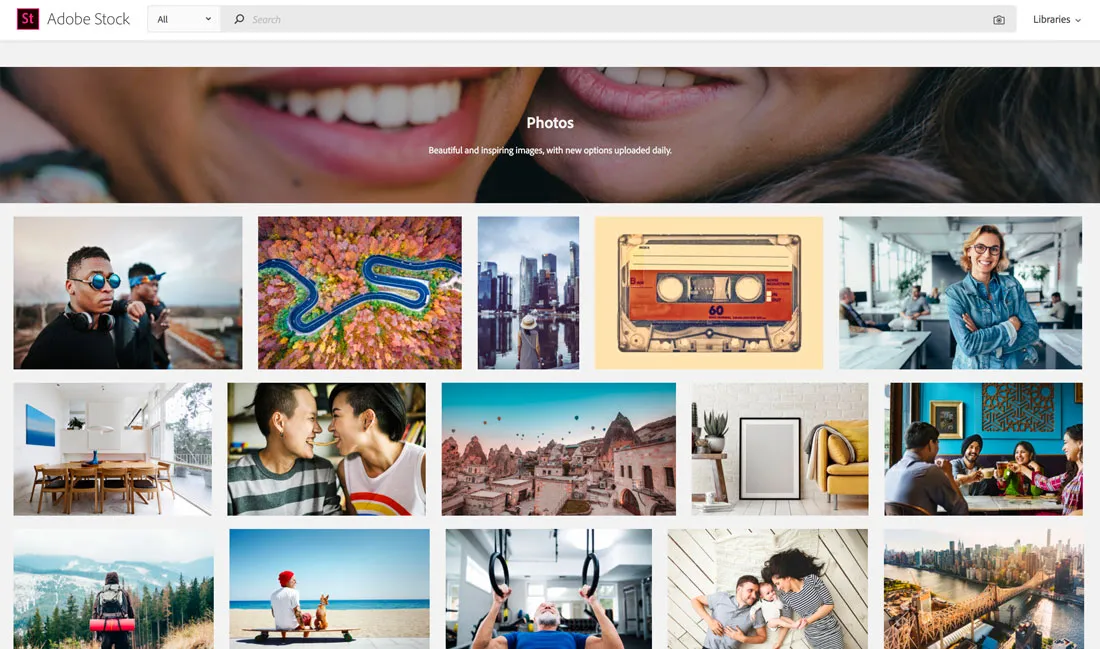Adobe Stock is a popular marketplace designed for both buyers and contributors. Whether you're a creative professional looking for high-quality images, videos, or templates, or a contributor aiming to sell your work, Adobe Stock provides a platform that meets your needs. With millions of assets available at your fingertips, it’s easy to find the perfect visual content to enhance your projects.
What makes Adobe Stock stand out is its integration with Adobe Creative Cloud applications, allowing seamless access to stock assets directly from tools like Photoshop and Illustrator. This feature streamlines the creative process, making it more efficient and enjoyable. For contributors, Adobe Stock offers a chance to monetize your creativity in a global market, giving you the opportunity to reach a wide audience while retaining ownership of your work.
Types of Licenses Offered

When it comes to licensing, Adobe Stock offers several options tailored to different needs. Understanding the types of licenses available is essential for both buyers and contributors, as it dictates how content can be used. Here's a breakdown of the primary licenses available:
- Standard License:
This license is the most common option for buyers. It allows for a wide range of uses, including print, web, and social media. However, it comes with certain limitations:
- Can be used for commercial and personal projects.
- Permits up to 500,000 copies or views.
- Not suitable for merchandise or resale.
- Extended License:
If you need broader usage rights, the extended license is the way to go. Here’s what it offers:
- Allows unlimited copies or views.
- Permits use in merchandise, templates, or items for resale.
- Ideal for high-volume projects or products.
Understanding these licenses is crucial for making informed decisions as a buyer and ensuring your rights are protected as a contributor. Always read the terms associated with each license type to avoid any potential misunderstandings down the line.
Also Read This: How to Download Private YouTube Videos
Licensing Process for Buyers

When it comes to purchasing images, understanding the licensing process is crucial. Adobe Stock offers a straightforward and user-friendly licensing model, making it easy for buyers to find the right images while ensuring they comply with legal requirements.
First off, you’ll want to start by browsing the vast library of images available on Adobe Stock. You can search for specific keywords, use filters to narrow down your options, or even explore curated collections. Once you find an image that catches your eye, click on it to view more details, including licensing information.
Adobe Stock primarily offers two types of licenses:
- Standard License: This is suitable for most commercial and personal projects. It allows you to use the image in various formats, such as websites, advertisements, and social media, but with some limitations on the number of reproductions.
- Enhanced License: If you plan to use an image in a way that exceeds the limits of the Standard License, like on merchandise or in products for resale, you’ll need the Enhanced License. This option provides broader usage rights.
Once you've selected your license type, the next step is to purchase the image. Adobe Stock offers flexible pricing options, including credits or subscriptions, allowing you to choose what works best for your budget. After payment, you can download the image immediately, ready to use in your projects!
Also Read This: Maximizing Your Earnings with Adobe Stock and Key Factors Influencing Your Income
How Contributors Can Sell Their Work
If you're a photographer or graphic designer looking to monetize your creative work, Adobe Stock is a fantastic platform to consider. Selling your images on Adobe Stock is not only a great way to earn some extra income but also provides exposure to a global audience.
To get started, you’ll need to create an Adobe Stock contributor account. The process is simple:
- Sign Up: Visit the Adobe Stock contributor portal and sign up using your Adobe ID.
- Submit Your Work: Once your account is set up, you can start uploading your images. Make sure to follow the guidelines regarding image quality, format, and content. High-resolution images that are well-composed tend to perform better.
- Add Metadata: Properly tagging your images with relevant keywords and descriptions is essential. This helps potential buyers find your work more easily.
- Set Your Prices: Adobe Stock allows contributors to set their own prices for images, but keep in mind that competitive pricing can increase your chances of sales.
Once your images are live on the platform, you’ll earn royalties based on the sales of your work. Adobe Stock pays contributors a percentage of each sale, creating a win-win situation for both buyers and sellers. So, if you have a collection of stunning images, why not share them with the world and start earning today?
Also Read This: How to Rename a Project on Behance
5. Understanding Royalties and Payments for Contributors
When it comes to contributing to Adobe Stock, understanding how royalties and payments work is crucial for maximizing your earnings. Adobe Stock operates on a commission-based model, which means that you earn a percentage of the sales price whenever someone purchases your stock photo, video, or illustration.
Here's a breakdown of how it typically works:
- Royalty Rates: Contributors usually earn between 20% to 60% of the sales price, depending on their contributor level and the type of content sold. The more you sell, the higher your contributor level, which can lead to better royalty rates.
- Payment Threshold: Before you can withdraw your earnings, you'll need to reach a minimum payment threshold, often around $25. So, keep creating and selling to reach that point!
- Payment Methods: Adobe offers several payment options, including PayPal and bank transfers. Choose the one that suits you best to receive your hard-earned cash.
It's also worth noting that Adobe pays contributors monthly, which allows for a steady stream of income if your content performs well.
In summary, being aware of how royalties and payments work can help you strategize your contributions and make informed decisions about your content creation. This knowledge empowers you to maximize your potential earnings while contributing to a vibrant marketplace.
Also Read This: Checkout Hacks: Remove Shipping Calculated on Shopify
6. Best Practices for Buyers and Contributors
Whether you're a buyer looking for the perfect image or a contributor aiming to sell your work, following best practices can make your experience smoother and more rewarding.
For Buyers:
- Search Smart: Utilize specific keywords and filters to narrow down your search. This saves time and helps you find exactly what you need.
- Check Licensing: Always read the licensing agreements. Understand what you can and cannot do with the images, so you don’t run into any legal issues later on.
- Quality Over Quantity: Instead of downloading a bunch of images, focus on finding a few high-quality ones that truly fit your project.
For Contributors:
- Upload High-Quality Content: Make sure your images are sharp, well-composed, and visually appealing. This increases the likelihood of sales.
- Stay Relevant: Keep an eye on current trends and seasonal themes. Creating content that aligns with popular searches can boost your sales.
- Optimize Metadata: Use descriptive keywords and categories to make your content easily discoverable. Good metadata can significantly increase your visibility.
By following these best practices, both buyers and contributors can enhance their experience on Adobe Stock, leading to successful transactions and rewarding creative endeavors.
Understanding Adobe Stock Photo Licensing for Buyers and Contributors
Adobe Stock is a popular platform for purchasing and selling stock photos, illustrations, videos, and templates. Understanding the licensing options available is crucial for both buyers and contributors to ensure that their usage aligns with the terms set by Adobe. Below, we break down the key elements of Adobe Stock photo licensing.
Types of Licenses
Adobe Stock offers several types of licenses for its media assets:
- Standard License: Allows for use in digital and print projects, web applications, and social media. However, it has restrictions on resale and uses in merchandise.
- Extended License: Provides broader usage rights, including the ability to use the asset in merchandise, and allows for unlimited reproduction and resale.
Usage Rights
When purchasing stock photos, buyers should be aware of the following usage rights associated with their licenses:
| Usage Type | Standard License | Extended License |
|---|---|---|
| Print Projects | Allowed | Allowed |
| Web & Social Media | Allowed | Allowed |
| Merchandise | Not Allowed | Allowed |
| Unlimited Reproduction | Limited | Unlimited |
Responsibilities of Contributors
For contributors, adhering to Adobe’s submission guidelines is paramount. They must ensure:
- Originality of content
- No copyright infringement
- Model and property releases when applicable
Understanding the licensing options and responsibilities on Adobe Stock is essential for both buyers and contributors. It ensures that creative projects can proceed smoothly while respecting the rights and conditions set forth by the platform.
Conclusion: Navigating Adobe Stock's licensing can seem complex, but by familiarizing yourself with the types of licenses and their respective rights, both buyers and contributors can maximize their experience and protect their creative assets.